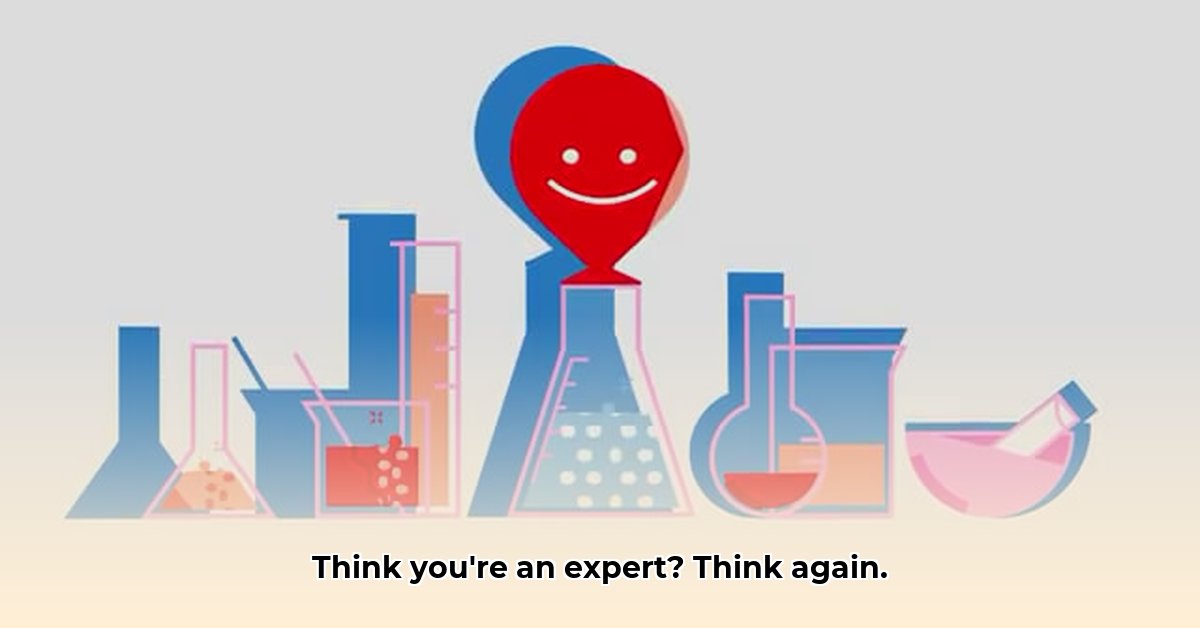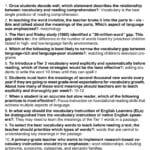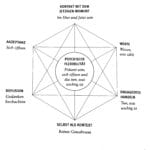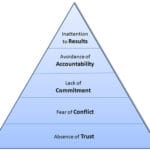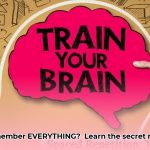Have you ever encountered someone who exuded confidence, only to discover that their skills didn’t quite measure up? Or perhaps you’ve questioned your own abilities despite evidence of your competence? This is the Dunning-Kruger effect, a cognitive bias that significantly impacts how we perceive ourselves and others. This article delves into the Dunning-Kruger effect, exploring its causes, real-world examples, and practical strategies for mitigating its influence, ultimately enhancing self-awareness, team performance, and decision-making.
Understanding the Dunning-Kruger Effect and Its Cognitive Roots
The Dunning-Kruger effect is more than just a quirky observation; it’s a well-documented psychological phenomenon that sheds light on the complexities of human cognition. Understanding its dynamics is crucial for personal and professional growth.
Defining the Dunning-Kruger Effect: A Comprehensive Overview
The Dunning-Kruger effect is a cognitive bias where individuals with low competence in a particular area tend to overestimate their abilities, while those with high competence often underestimate theirs. This bias stems from a lack of metacognition – the ability to reflect on and evaluate one’s own thoughts and performance. It’s not about intentional deception or arrogance; rather, it’s a consequence of not knowing what you don’t know.
Imagine a novice chess player who, after learning the basic rules, believes they are ready to compete with experienced players. Conversely, a seasoned chess grandmaster might be acutely aware of the vastness of the game and the potential for mistakes, leading them to underestimate their own skill relative to the absolute best. This vividly illustrates the core principle of the Dunning-Kruger effect: perceived confidence doesn’t always align with actual competence.
Exploring the Psychological Mechanisms at Play
The Dunning-Kruger effect is deeply rooted in metacognition and how our brains process information. Individuals lacking expertise in a specific area often lack the metacognitive skills to accurately assess their performance. They are unable to recognize their own shortcomings because they “don’t know what they don’t know.” This lack of awareness creates a blind spot, leading to inflated self-assessments.
Our brains also have a natural tendency to seek out information that confirms existing beliefs, a phenomenon known as confirmation bias. This bias further reinforces the Dunning-Kruger effect by causing us to ignore or downplay contradictory evidence, thus perpetuating the illusion of competence. Sufficient knowledge is vital to recognize both competence and incompetence in any field.
The Tangible Ramifications of Overconfidence in Everyday Life
The Dunning-Kruger effect has far-reaching consequences that extend beyond academic theory. Overconfident individuals, unaware of their limitations, are prone to making poor decisions, taking unnecessary risks, and failing to seek expert advice when needed. This can lead to negative outcomes in various aspects of life, from personal finances to professional endeavors.
Consider a homeowner who confidently attempts to fix a complex electrical problem without proper training, or an individual who invests heavily in the stock market based on limited knowledge and unreliable sources. These scenarios highlight the real-world dangers of the Dunning-Kruger effect.
The Dunning-Kruger effect is not a fixed trait; it’s a dynamic phenomenon that can be influenced by experience, learning, and self-awareness. By actively seeking feedback, expanding our knowledge, and cultivating humility, we can mitigate its effects and make more informed decisions.
Cultivating Self-Awareness: Practical Strategies to Combat the Dunning-Kruger Effect
The key to overcoming the Dunning-Kruger effect lies in enhancing self-awareness and fostering a growth mindset. By actively seeking feedback, embracing lifelong learning, and questioning our assumptions, we can develop a more realistic perception of our abilities.
- Actively Seek Constructive Feedback: Solicit honest, specific feedback from trusted mentors, colleagues, or friends. Be open to hearing criticism, even if it’s uncomfortable, and view it as an opportunity for growth.
- Commit to Lifelong Learning: Continuously expand your knowledge and skills through formal education, online courses, books, and hands-on experience. The more you learn, the more you realize the vastness of knowledge and the limitations of your own understanding.
- Identify and Acknowledge Knowledge Gaps: Honestly assess your strengths and weaknesses, and actively seek to fill in the gaps in your knowledge. Focus on areas where you need improvement rather than dwelling on your existing strengths.
- Practice Self-Reflection Regularly: Take time to reflect on your performance, decisions, and interactions with others. Analyze your assumptions, biases, and thought processes to identify areas where you can improve.
- Challenge Your Assumptions: Be open to the possibility of being wrong, and actively seek out alternative perspectives. Don’t cling to your beliefs when faced with new information or evidence that contradicts them.
- Cultivate Humility: Acknowledge that you don’t have all the answers and that there is always more to learn. A humble attitude is essential for continuous learning and development.
Spotting the Dunning-Kruger Effect in Action: Real-World Examples
The Dunning-Kruger effect manifests in various aspects of life, from workplace dynamics to personal relationships. Understanding these examples can help you recognize the bias in yourself and others.
| Area of Life | Demonstrating Low Skill/Overconfidence | Displaying High Skill/Underconfidence |
|---|---|---|
| Workplace | A new employee believing their ideas are superior to experienced colleagues. | A seasoned expert downplaying their expertise. |
| Relationships | Someone thinking they’re an excellent communicator despite constant misunderstandings. | A supportive partner underestimating their positive impact on the relationship. |
| Personal Finance | Investing heavily based on tips from unreliable sources, despite lacking expertise. | An experienced investor questioning their investment strategy despite a history of success. |
| Creative Pursuits | An amateur artist believing their work is masterpiece-level, despite lacking skill. | A skilled artist doubting their abilities. |
By recognizing these signs and actively working on self-awareness, you can mitigate the Dunning-Kruger effect and develop a more realistic self-perception.
Strategies to Improve Team Decision-Making
Key Takeaways:
- The Dunning-Kruger effect can negatively impact team dynamics, causing inaccurate self-assessments and progress obstacles.
- Mitigating the Dunning-Kruger effect in team decision-making involves fostering continuous learning and open communication.
- Implementing targeted strategies for team members and leadership levels impacted by this bias is essential.
- Objective metrics, team collaboration, and self-reflection are crucial for better team decision-making.
Identifying How Perceptions Can Skew
The Dunning-Kruger effect leads people with limited knowledge to wrongly believe they are more intelligent. Conversely, it causes people with high knowledge to think they are not as smart. This highlights the importance of self-awareness.
In software development, junior developers might begin a complex task, and senior developers might hesitate. Fostering a culture of continuous improvement is essential to team development.
The Domino Effect on Teams
Imagine a team updating software. A less experienced developer might confidently propose a flawed solution, and an experienced lead developer might hesitate to contribute knowledge. This highlights the harmful impact on team dynamics.
Teamwork and project completion depend on addressing the biases.
How to Correct Perceptions
Mitigating the Dunning-Kruger effect in team decision-making requires a multifaceted approach that builds a culture of continuous improvement. Here’s a breakdown of strategies:
-
Build a Culture of Continuous Learning:
- Regular Training and Workshops: Training keeps skills current.
- Mentorship Programs: Pair experienced with newer developers.
- Knowledge Sharing Sessions: Collaboration and open communication can be improved.
-
Promote Objective Assessment:
-
Peer Code Reviews: Improves reducing errors and misconceptions.
- Regular Performance Evaluations: Provides objective evaluations of skills.
- Self-Assessment Tools: Equips developers to improve their confidence.
-
Foster Collaborative Decision-Making:
-
Team Brainstorming Sessions: Diverse perspectives minimize individual biases.
- Clear Communication Channels: Understanding can be improved with open discussions.
- Decision-Making Frameworks: Promotes team collaboration, and reduces reliance on individual opinions.
- Leadership’s Role:
Leaders need to be self-aware, and create a safe environment that allows team members to grow. This includes active listening and feedback.
Nurturing Team Growth
Addressing the Dunning-Kruger effect within teams is a commitment to cultivating a healthy culture.
- Regular Skill Development: Maintain a consistent learning cycle.
- Mentorship and Leadership Training: Strengthen leadership abilities.
- Project Post-Mortems: Analyze projects, and learn from team members’ mistakes, and improve processes.
Implementing these strategies helps organizations mitigate the negative impacts of the Dunning-Kruger effect. Through proactive measures, teams can improve self-assessment.
Best Strategies for Dunning-Kruger Mitigation in Project Management
Have you ever worked with someone who seemed confident during project management but missed deadlines? The Dunning-Kruger effect is where less skilled people overestimate themselves, and skilled people underestimate themselves.
Seeing the Effect on Projects
The Dunning-Kruger effect leads to unrealistic timelines, poor risk assessment, and poor team dynamics. “Knowing it all” can frustrate team members. Mitigating the Dunning-Kruger bias in project management takes a multifaceted approach.
Red Flags
How can you spot the Dunning-Kruger effect in project management? Look for the following:
- Resistance to Feedback: Dismissing criticism as inaccurate.
- Overly Confident Predictions: Consistently unrealistic deadlines and budget projections.
- Lack of Self-Reflection: Failing to learn from mistakes and improve.
- Dismissive Attitude Towards Others’ Expertise: Disregarding the input of experienced team members.
How to Mitigate
Mitigating the Dunning-Kruger bias in project management involves creating honest assessments of skills and learning from team member criticism:
- Implement Regular Feedback Systems: Structured reviews can help individuals see their strengths. Build confidence with honest and specific feedback.
- Promote Collaborative Decision-Making: Encourage discussions, and diverse perspectives.
- Utilize Objective Metrics: Use data to measure progress and make decisions.
- Foster a Culture of Continuous Learning: Encourage sharing knowledge, and recognizing expertise.
- Encourage Self-Assessment: Evaluate processes from beginning to end.
Traits of a Leader
Leaders have a big impact with mitigating the Dunning-Kruger bias in project management. They should:
- Model self-awareness.
- Create a safe assessment space.
- Provide continuous training.
- Reward development.
It’s about creating a culture of continuous project improvement.
Tools
Tools like Gantt charts provide project timelines and risk registers help mitigate problems. These tools help counter the overconfidence linked to the Dunning-Kruger effect.
Teams can improve by mitigating the Dunning-Kruger effect, and fostering a culture of project success.
How to Reduce the Dunning-Kruger Effect in Software Development Teams To Improving Team Health
Key Takeaways:
- The Dunning-Kruger effect impacts software teams, and has them both overestimate or underestimate skills.
- This bias affects project timelines, and team dynamics.
- Mitigating the Dunning-Kruger Effect in Software Development Teams requires learning, and honest feedback.
- Team member satisfaction can be found in mentorship.
Knowing the Impact on Software Development
Have you ever met a less seasoned pro who downplays their expertise? This is the Dunning-Kruger effect.
How It Affects Projects
In software development, this can be disastrous. Overconfident developers might take on commitment beyond their capabilities. Underestimation stifles improvement. Poor project estimations hurts team dynamics.
How To Improve Team Cohesion
Mitigating the Dunning-Kruger Effect in Software Development Teams means fostering a balanced, realistic view of skill levels. Here’s how:
- Structured Mentorship: Improve knowledge among team members.
- Regular Code Reviews: Peer reviews offer help, and improve project performance.
- Objective Performance Metrics: Provides a data-driven reality check, for perceptions.
- Continuous Learning Culture: Workshops make sure skills are updated.
- Feedback Mechanisms: Helps team members with constructive criticism.
- Embrace Learning: Creates learning opportunities.
These steps create a project culture.
Long-Term Vision
The long-term goal is to cultivate a strong team culture.
By implementing these steps, individuals can improve the Dunning-Kruger effect, and improve decision-making.
